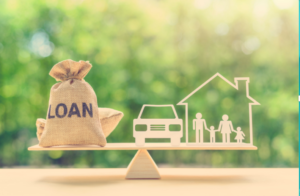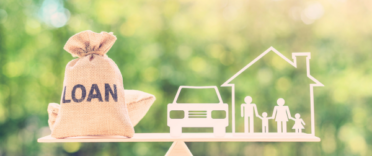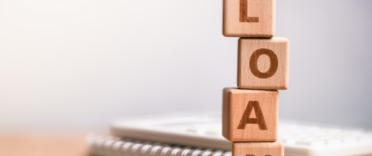 Loans are categorised as being either secured or unsecured. A secured loan involves borrowing against something that you own, while an unsecured loan does not. Selecting the right option for you will be key to making sure you are borrowing in the best way possible. Some people will be more suited to the lower rates of a secured loan, while others will want to take advantage of the wider availability of unsecured loans. In this article, we explain the difference between these two options, outline the advantages and disadvantages of each and talk you through the respective application processes.
Loans are categorised as being either secured or unsecured. A secured loan involves borrowing against something that you own, while an unsecured loan does not. Selecting the right option for you will be key to making sure you are borrowing in the best way possible. Some people will be more suited to the lower rates of a secured loan, while others will want to take advantage of the wider availability of unsecured loans. In this article, we explain the difference between these two options, outline the advantages and disadvantages of each and talk you through the respective application processes.
Secured vs unsecured loans
Here are the basics of secured and unsecured loans:
Secured loans explained
A secured loan is a loan backed by an asset, which is normally your home, but could also be another valuable item such as a car or piece of jewellery. It means that, if you fail to make the repayments on the loan, the lender has the right to repossess the item that has been put up for collateral. The loan is secured against the item you put up as security, because it protects the lender's interests by providing an asset that can be sold in the case of nonpayment. As the loan a safer bet for the lender, which normally means the terms are better, but a riskier option for borrowers.
You can read more about secured loans in our article 'What is a secured loan?'.
Secured loans are also known as second-charge mortgages or home equity or homeowner loans. You can choose to get a further advance from your current mortgage lender, which will typically be at a different rate from your first-charge mortgage. Alternatively, you may opt to get the secured loan from another lender, if you can get it for a better rate. Another option is to remortgage and release some of the equity in your property to create a single, bigger loan. Borrowing against your home is a big step, but you can find more information in our article 'Is it better to remortgage or get a loan?'.
Go to our 'The best secured loans & the rates in the UK' page to compare secured loans.
Unsecured loans explained
As the name suggests, an unsecured loan doesn't require any security in the form of collateral. The borrower simply agrees to pay back the money owed and faces extra charges and penalties that can accrue if payments are late or missed. We have more information on unsecured loans in our article 'What is an unsecured loan?'.
The other risk with this type of borrowing is that missed payments will appear on your credit record and could damage your credit rating. If you persistently fail to repay, the debt is likely to be passed on to a debt recovery agency and you could be taken to court. The best way to avoid this worst-case-scenario is to deal with debt struggles early on. Your first steps if you cannot meet your loan repayments should be to contact your lender and access free debt advice. You can read our article on ‘Where to get free debt advice’ to find out more.
An unsecured loan is typically more expensive than its secured counterpart as the lender has less of a guarantee of getting the money back. In addition, there isn't usually the scope to borrow as much money as with a secured loan. However, as a borrower, there is arguably less at stake, the application process is quicker and there is more flexibility in terms of how long you have to repay the loan.
You can compare the UK's top unsecured loans on our 'The best personal loans' page.
The differences between secured and unsecured loans
Here are the main differences between a secured and an unsecured loan:
| Unsecured loan | Secured loan |
| No security required (you don't need to be a homeowner) | Security required (this usually means you will need to be a homeowner) |
| Your home will not be directly at risk if you default on the loan | The lender could repossess your home, or anything else that was used as security, if you fail to repay the loan |
| Limited maximum loans | High maximum loans (depending on the value of the security) |
| Shorter terms | Long-term loans available |
| Usually a fixed rate of interest, which means a fixed monthly payment | Variable interest rates are common, which means monthly payments can change during the loan term |
| A good credit score is needed to get the best rates | The value of the security is usually more important than the applicant's credit score |
| Approval and payment can be very quick | Approval can take a long time, as can receiving the money |
| Can often be set up fee-free | Can be expensive to set up |
The pros and cons of a secured loan
Here are the key advantages and disadvantages of secured loans.
What are the advantages of a secured loan?
- The rates are typically lower, as they pose less risk to the lender
- You can borrow larger amounts, with most loans over £10,000, although they start at around £3,000
- It can be used for more substantial spending, such as house renovations, a car purchase, a wedding or to consolidate other debts
What are the disadvantages of a secured loan?
- The item you secure the debt against – most often your home – will be at risk if you don't keep up repayments
- There may be an early repayment charge that restricts you from paying off the debt earlier
- The application process is robust and more time consuming than for an unsecured loan
The pros and cons of an unsecured loan
Below we have summarised the most important advantages and disadvantages of unsecured loans.
What are the advantages of an unsecured loan?
- Unsecured loans are more widely available than secured loans and the application process is relatively straightforward
- There is less risk of losing your home if you don't keep up repayments, although it could impact on your credit record and your capacity for future borrowing
- You can generally pay off the debt as quickly as you like, sometimes without incurring a financial penalty
- The interest rate tends to be fixed, so it is easy to budget for the repayments
What are the disadvantages of an unsecured loan?
- The interest rate is typically higher than for a secured loan and you may not be able to borrow as much
- You may be less likely to be eligible for an unsecured loan if you have poor credit
- There is still some risk involved if you don't keep up repayments
Should I get a secured or unsecured loan?
The choice between a secured and unsecured loan will largely be decided by the amount you want to borrow, your financial circumstances and your willingness to potentially lose your home if you are unable to repay the loan. A secured loan can be a useful way of getting a grip on your finances if you have existing debts or need to access a larger lump sum, perhaps for work on your property that will ultimately increase its value. Meanwhile, an unsecured loan is perhaps a better option if you only need to borrow a relatively small amount and would prefer to repay it over a shorter timeframe. Both options require serious consideration, in the same way as taking on any debt does.
Loans vs credit cards
You may find that a credit card is a better option than an unsecured or secured loan. This could be because you are planning on borrowing a small amount, only need the money for a short period of time, or both. A credit card may be especially attractive if you are able to get a 0% purchase credit card.
A credit card can also be a useful tool to build up a good credit score if you do not have a long history of borrowing. There are specific credit cards that suit this style of borrowing and you can find out more in our article ‘Credit-builder cards – which is the best credit card if I have poor credit?’.
You can find out more about choosing between a loan and a credit card by reading our article ‘Is it better to get a credit card or a personal loan?’.
How to find out which credit card is best for you
You can use Money to the Masses partner Creditec* to quickly build a list of the credit cards that match up with your needs. By simply adding in a few basic details, you will get a tailored collection of the best credit cards for you. You can use your Creditec results to check how likely you are to be accepted for a certain card, which cards available to you offer the best rewards or find out what option will leave you with the lowest fees to pay. Creditec is able to check your eligibility without running a full credit check, which means your credit score will not be affected. Click this link to start your comparison*.
Debt help for secured and unsecured loan repayment
Struggling to meet monthly loan repayments can quickly spiral into a serious debt problem. If you are worried you will be unable to meet your next repayment, pay off your loan in full or have already missed a payment, contact your lender straight away. Legitimate lenders will prefer to see you repay your loan than default, as recovering the money through court proceedings will be costly. Your loan provider will often be able to restructure your repayment schedule to help you meet the payments.
You can also reach out to debt charities for free and independent advice. In some cases, these organisations can speak to the lender on your behalf to find a solution. Here are some options for free debt help:
If a link has an * beside it this means that it is an affiliated link. If you go via the link Money to the Masses may receive a small fee which helps keep Money to the Masses free to use. But as you can clearly see this has in no way influenced this independent and balanced review of the product.



